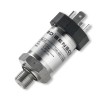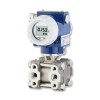IP68 pressure transmitters which are waterproof rated for permanent installations underwater or requiring temporary flood protection. IP68 pressure transmitters are fitted with watertight cable connections in the form of a plug and socket or integral cable gland seal to prevent the ingress of water to a specified depth and time period.
Products
 DMK457 Marine Approved Pressure Transmitter - Marine approved pressure transmitter with 4-20mA current loop output for shipbuilding with optional CuNiFe housing for sea-water compatibility
DMK457 Marine Approved Pressure Transmitter - Marine approved pressure transmitter with 4-20mA current loop output for shipbuilding with optional CuNiFe housing for sea-water compatibility DMP457 Marine Approved Pressure Transmitter - Marine approved stainless steel diaphragm pressure transmitter with 4-20mA current loop output for shipbuilding in ranges from 100mb to 600 bar gauge or absolute.
DMP457 Marine Approved Pressure Transmitter - Marine approved stainless steel diaphragm pressure transmitter with 4-20mA current loop output for shipbuilding in ranges from 100mb to 600 bar gauge or absolute.

